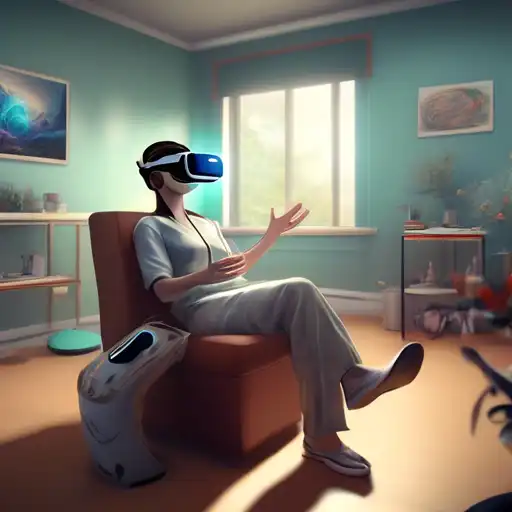The Transformative Role of Virtual Reality in Therapeutic Practices
Virtual Reality (VR) technology has transcended its initial entertainment-centric applications, paving the way for groundbreaking uses in therapy. This immersive technology is now a pivotal tool in treating various mental health conditions, offering patients a safe and controlled environment to confront and overcome their challenges.
Understanding VR Therapy
VR therapy, also known as virtual reality exposure therapy (VRET), utilizes simulated environments to help individuals face their fears and anxieties in a controlled setting. This method is particularly effective for treating phobias, PTSD, and anxiety disorders, providing a safe space for patients to engage with their triggers without real-world risks.
Applications of VR in Therapy
The applications of VR in therapy are vast and varied. Below are some of the key areas where VR is making a significant impact:
- Phobia Treatment: Patients can gradually face their fears, such as heights or spiders, in a virtual environment, reducing their anxiety over time.
- PTSD Therapy: Veterans and others suffering from PTSD can revisit traumatic scenarios in a controlled manner, aiding in their recovery process.
- Anxiety and Stress Reduction: VR environments can simulate calming scenarios, helping individuals learn stress management techniques.
- Autism Spectrum Disorders: VR can help individuals with autism develop social skills by simulating real-life interactions.
The Benefits of VR Therapy
VR therapy offers numerous benefits over traditional therapeutic methods. It provides a high level of control over the therapeutic environment, allows for the customization of scenarios to meet individual patient needs, and can be a more cost-effective solution in the long run. Moreover, the immersive nature of VR can lead to more engaging and effective therapy sessions.
Challenges and Considerations
Despite its advantages, VR therapy is not without its challenges. The cost of VR equipment and the need for specialized training for therapists can be barriers to widespread adoption. Additionally, ensuring the privacy and security of patient data within VR applications is paramount.
The Future of VR in Therapy
The future of VR in therapy looks promising, with ongoing research and development aimed at expanding its applications and accessibility. As technology advances, we can expect VR therapy to become more personalized, affordable, and widespread, offering hope to many who struggle with mental health issues.
For those interested in exploring more about how technology is revolutionizing healthcare, check out our article on The Impact of Technology on Healthcare.
In conclusion, VR is transforming the therapeutic landscape, offering innovative solutions to age-old problems. Its ability to simulate real-life scenarios in a controlled environment makes it an invaluable tool in mental health treatment, promising a brighter future for patients and therapists alike.
